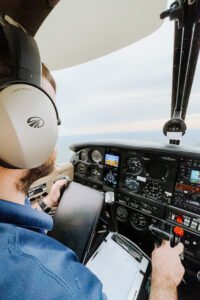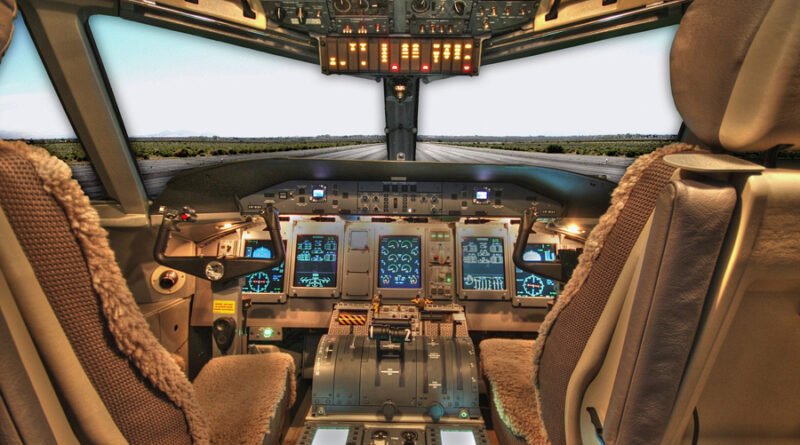Airplane Cockpit: The Heart of Flight Operations
The airplane cockpit stands as the nerve center of any flight, where pilots embark on their aerial journeys and navigate the skies with precision and skill. Beyond its iconic appearance, the cockpit is a complex space, adorned with an array of instruments and advanced technology that ensures safe and efficient flight operations. In this blog, we delve into the heart of aviation—the airplane cockpit—to explore its significance, the role of pilots, and the sophisticated instruments that make air travel possible.
The Significance of the Airplane Cockpit
The airplane cockpit is a critical area where pilots, also known as aviators, assume command of the aircraft. This confined space houses a wealth of essential controls and information that enables pilots to maneuver the airplane and ensure the safety of passengers and crew. From takeoff to landing, pilots rely on the instruments and technology at their disposal to navigate through varying weather conditions and airspace complexities.
The Role of Pilots in Flight Operations
Pilots play a pivotal role in flight operations, commanding the aircraft through a combination of skill, training, and experience. They are responsible for conducting pre-flight checks, coordinating with air traffic control, and managing the airplane’s systems during the journey. Pilots undergo rigorous training, including flight simulations and emergency procedures, to prepare for a wide range of scenarios they may encounter during flight.
Essential Cockpit Instruments
The cockpit houses an array of instruments designed to provide pilots with critical information about the airplane’s performance, position, and environment. Some of the essential cockpit instruments include:

Flight Controls: These include the yoke or control column, rudder pedals, and throttle, which allow pilots to control the airplane’s movements and speed.
Flight Instruments: The primary flight instruments consist of the airspeed indicator, altimeter, and attitude indicator, providing crucial information about the airplane’s speed, altitude, and orientation in relation to the horizon.
Navigation Instruments: These instruments, such as the GPS (Global Positioning System) and VOR (VHF Omni-directional Range), assist pilots in determining the aircraft’s position and navigating along specified flight routes.
Engine Instruments: These gauges monitor the airplane’s engine performance, including RPM (Revolutions Per Minute), fuel levels, oil pressure, and temperature.
Communication Systems: Radios and communication devices allow pilots to stay connected with air traffic controllers and other aircraft during the flight.
Advanced Technology in Modern Cockpits
Advancements in aviation technology have transformed the modern airplane cockpit, enhancing safety, efficiency, and situational awareness. Many modern airplanes feature glass cockpits, also known as electronic flight instrument systems (EFIS), where traditional analog instruments are replaced with digital displays. These glass cockpits integrate data from various sources and present it in a user-friendly format, allowing pilots to access critical information with ease.
Additionally, modern cockpits are equipped with advanced avionics systems, including autopilot, traffic collision avoidance systems (TCAS), terrain awareness and warning systems (TAWS), and weather radar. These technologies assist pilots in managing the flight more effectively, reducing workload, and enhancing safety during various flight phases.
The Evolution of Cockpit Design
Over the years, the design and layout of airplane cockpits have evolved significantly. From the early days of aviation, when cockpits were open and exposed to the elements, to the sophisticated and enclosed cockpits of today, the focus has been on improving pilot comfort, safety, and functionality. Ergonomic designs, better visibility, and intuitive control interfaces have all contributed to the evolution of the modern cockpit.
Conclusion
The airplane cockpit stands as the heart of flight operations, where skilled aviators command the aircraft and navigate the skies with precision and expertise. The intricate instruments and advanced technology within the cockpit empower pilots to make informed decisions, ensuring the safety and efficiency of air travel. As aviation continues to evolve, the cockpit remains at the forefront of innovation, reflecting the commitment to enhancing the experience of flying and ensuring the trust and confidence of passengers worldwide. So, the next time you board a flight, take a moment to appreciate the complexity and significance of the airplane cockpit—the remarkable center that enables humanity to soar through the skies.




